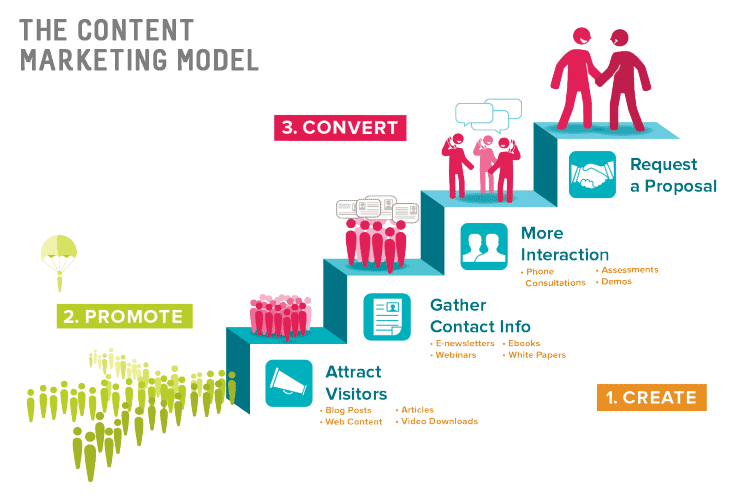
Social media investing can bring many benefits. The four C's, Cost, Conversion. Community, Credibility, are all key factors in social media for a business. Social media marketing should maximize the impact of consumer investments. These include blog comments, registrations to brand-related forums, and private endorsements (Twitter post, Facebook comment, etc.). These investments can improve brand awareness and lead to greater sales.
Brand Awareness - Increased
The goal of most brands is to be remembered by the masses without any effort. They invest millions trying to achieve this. Brand awareness is achieved when the masses instantly recognize a brand, even when it doesn't exist. There are many options to increase brand awareness. Here are some ways to quickly increase brand recognition. - Create a brand tagline to describe your product.

Cost savings
Among the benefits of using social media for marketing, word-of-mouth recommendations are among the most cost-effective. Online relationships can influence consumers' buying decisions. The most important metrics to measure the return on social media investment are brand attitudes, cost per respond, and risk management. This article will explain how to measure the return on your investment via social media. This article will show you how to measure cost savings and calculate the ROI.
Improved customer experience
A positive customer experience is vital to any business, no matter how small or large. You won't last long if you don't have satisfied customers. But, happy customers are more likely cross-sell with or upsell to others. It is crucial to enhance customer experiences with social media investments. Here are some tips for making this process as easy as possible. We hope you found this article helpful.
Sales increase
According to a new report, companies spend over $3 billion each year on social media. Although this is still a small amount compared to other marketing channels, it is still a significant sum. Specifically, these companies are using social media to improve brand awareness and create buzz. These large retailers also use social media to give customers a more seamless, personalized and flexible experience. These companies are not only increasing brand awareness but also driving sales.
Mitigate risk
Companies should consider the use of social media when evaluating risks. Social media can be used internally for recruiting, employee engagement, communications, and marketing. However, external uses include customer service, marketing, business networking, and customer service. There are many potential risks depending on how social media is used. However, some of these can be mitigated by technology and policy. This article will address some of the main risks that social media can pose for businesses.

Increased ROI
Increasing ROI from social media investments requires tracking metrics that measure your results. Metrics should have an objective and a goal. Although engagement is the most commonly used social media metric for measuring success, there are other metrics you should consider. Altimeter research indicates that engagement is a key metric for over a quarter of content executives. Engagement includes clicks, shares, likes, and brand mentions. You should be aware that not all engagement metrics are created equal. This is why it is so important to find the most important ones for your business.
FAQ
Is content marketing expensive?
It all depends upon the size of your company and where you are at. Small businesses often start without any dedicated resources. They realize, however that as they grow, a strong content marketing strategy will improve sales and customer engagement.
Partnering with a content agency or freelance writer will give you access to many tools and expertise. These professionals can identify issues and opportunities in your organization to help guide your content marketing program.
A strong content marketing strategy will provide enough income to cover production costs, while also giving you the opportunity to invest in other areas within your business.
Why should I have a Content Marketing Strategy in place? Why should I not only send out emails, but also post social media updates.
Two main reasons you may choose to ignore a Content Marketing Strategy.
-
You might think that email marketing and social media posts are enough to get people talking about your brand.
-
You might think that posting on social media or email marketing is impossible if you haven’t tried it.
Both assumptions are false.
Email marketing, as well as social media posts, can be excellent ways to communicate with prospects or customers. They aren't sufficient by themselves.
An email campaign alone won't help you reach your goals. Your email campaign should be part a larger strategy. You can't rely on social media to help you reach your goals. They should be part a bigger plan.
This is where a Content Marketing Strategy can help. A Content Marketing Strategy is a plan that sets clear goals for each piece. This will allow you to manage the entire content creation process.
As a consequence, you will be able spend more time on other vital aspects of running your business, such as growing your customer base and increasing conversion rates.
While there are many advantages to having a Content Marketing Strategy in place, it does not make it easy.
But, when you have a strategy in place, it makes all the difference.
How can I measure success when using content marketing?
There are many different ways to evaluate the effectiveness your content marketing strategy.
One good measurement tool is Google Analytics. Google Analytics allows you to see the origins of your targeted traffic and which pages they most often visit.
It will also show you how long each visitor stays before leaving your site.
This information can be used to improve your content and to keep people engaged for longer periods.
The following questions will help you to measure the success and failure of your content marketing efforts:
What value do my new subscribers receive from my email bulletins? What percentage of my entire mailing list has converted into paying memberships? How many people have clicked on my landing page to convert? Are click-throughs more successful than other types of conversions?
These are important metrics to monitor and track over time.
A great way of measuring content marketing success is to examine the number people share your content via social networks.
Consider starting now if this is something you aren't doing. It could mean the difference between being seen and unseen in your industry!
What is the best Content Marketing platform?
There are many different platforms out there today. Each one has its advantages and disadvantages. Here are some top choices:
-
WordPress - Simple to setup and manage. Fantastic community.
-
Wix is easier than WordPress to set-up and maintain. You do not need to have any technical knowledge.
-
Squarespace – Best choice for those with a website.
-
Blogger - Free blog service
-
Medium - A place to share your work.
-
Instagram - An image-based platform.
-
LinkedIn - A networking tool.
-
Facebook - A social network.
-
YouTube - Video sharing platform.
-
Pinterest - Image-based platform.
-
Google Analytics - Track visitor behaviour.
-
Hubspot - Email marketing software.
-
MailChimp - Email marketing software.
Statistics
- An example of an overarching goal could be: "In 2022, we want to achieve a 20% increase in revenue created by organic content and generate 15,000 MQLs with a budget of $30,000." (semrush.com)
- In fact, would pay more for a better customer experience, and 86% of B2B buyers would pay more. (neilpatel.com)
- According to our research, brand awareness, attracting traffic, and generating leads remain the key content marketing goals in 2022. (semrush.com)
- According to research compiled by Coschedule: Companies that publish 16+ blog posts a month get as much as 3.5x as much traffic as those that publish 0-4 posts a month. (criteo.com)
- According to our research, 65% of companies with very successful content marketing in 2021 ran content audits at least twice a year. (semrush.com)
- According to the Content Marketing Institute, 70% of B2B marketers and 86% of B2C marketers surveyed use content marketing in some form or other. (criteo.com)
- We found that 40% of businesses don't have a documented strategy yet. (semrush.com)
- Companies that use content marketing see approximately 30% higher growth rates than businesses not using it. (mailchimp.com)
External Links
How To
Infographic Design Tips for Content Marketing
Infographics make complex concepts simple and easy to understand. Use infographics as a tool to promote your content marketing message.
You'll need design software such as Adobe Illustrator or Photoshop to create an infographic. These programs can be used to create different shapes and elements that represent your data. Then, you can add colors and fonts to make it look great. Once you have your design ready, upload images from Unsplash or Pixabay to add to it.
You can find inspiration for your own ideas by looking at existing infographics online. A picture of a food Pyramid could be used to show how many calories each food has. Or, you might choose to look up how much sugar is in soda pop and change that number to a picture of a bottle of Coke.
After you have created your infographic, it can be shared through social media channels such as Facebook and Twitter. This helps people who aren't familiar with the concept learn about it. Include hashtags if you plan to share your infographic via social media platforms. This will allow others to see what you're talking. Hashtags allow users to follow along with conversations surrounding specific topics.
Try to make your infographic posts shorter than you normally would if you create one. An average blog post is between 2000 and 5000 words, while an infographic takes 500 to 1000 words. This means you can easily convey more information with less space.
When designing your infographic, remember that some viewers may struggle to read small font sizes. Your graphics should be large enough in font size and not rely on too much color. Make sure all text is legible.
These are just a few additional tips.
-
Use an infographic template. There are many free templates online. Canva, Piktochart and Google Slides are the most used templates.
-
Make your Infographic. Use the template below to create your infographic. You can use whatever media is most appropriate for your audience. In this example, photos of Seattle restaurants might be used to create an infographic about Seattle's best restaurants.
-
Add Text. Add text after you've created your infographic.
-
Add images. Your infographic can also include images. These images could be photos, charts, graphs or icons. If you want to add a picture, make sure it's relevant to your topic.
-
Make It Interactive. You can add interactive elements, such as maps, buttons, and links. This will help engage your audience.
-
Share. Share your infographic with others on social media such as Facebook, Twitter and LinkedIn.
-
Measure. How well did your infographic perform? Are people clicking through to your website or not? Did they sign up for your email list? Was your infographic received well by them?
-
Improve. Is there a way to improve your infographic? What could you do better next year?
-
Repeat. Repeat.